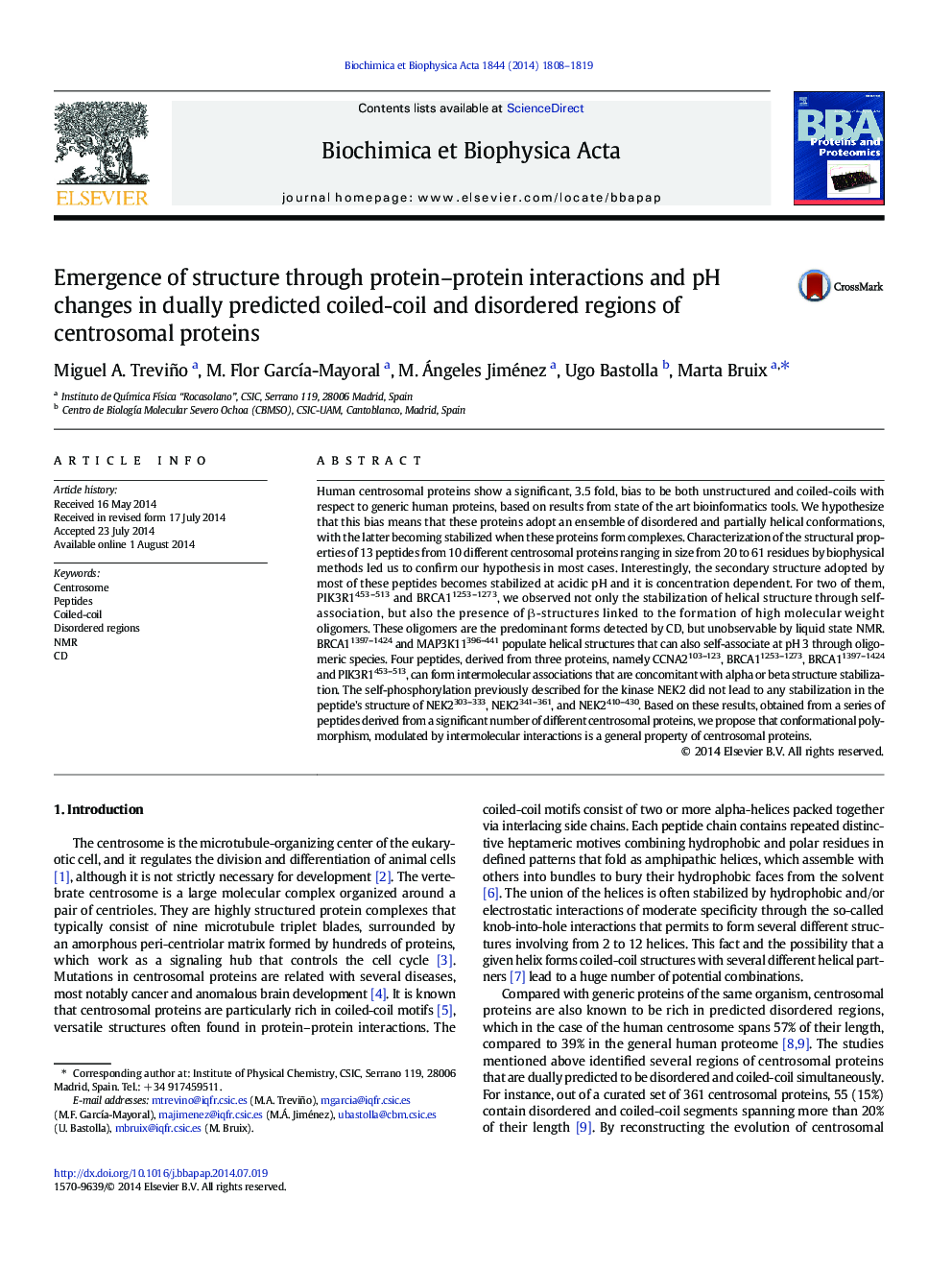| Article ID | Journal | Published Year | Pages | File Type |
|---|---|---|---|---|
| 1177842 | Biochimica et Biophysica Acta (BBA) - Proteins and Proteomics | 2014 | 12 Pages |
•Centrosomal proteins contain sequences predicted as both disordered and coiled-coils.•Acidic pH stabilizes secondary structures in 13 biophysically characterized peptides.•Most of the 13 peptides show concentration-dependent secondary structures.•Some peptide pairs interact stabilizing their secondary structures.•Conformational polymorphism can be a general property of centrosomal proteins.
Human centrosomal proteins show a significant, 3.5 fold, bias to be both unstructured and coiled-coils with respect to generic human proteins, based on results from state of the art bioinformatics tools. We hypothesize that this bias means that these proteins adopt an ensemble of disordered and partially helical conformations, with the latter becoming stabilized when these proteins form complexes. Characterization of the structural properties of 13 peptides from 10 different centrosomal proteins ranging in size from 20 to 61 residues by biophysical methods led us to confirm our hypothesis in most cases. Interestingly, the secondary structure adopted by most of these peptides becomes stabilized at acidic pH and it is concentration dependent. For two of them, PIK3R1453–513 and BRCA11253–1273, we observed not only the stabilization of helical structure through self-association, but also the presence of β-structures linked to the formation of high molecular weight oligomers. These oligomers are the predominant forms detected by CD, but unobservable by liquid state NMR. BRCA11397–1424 and MAP3K11396–441 populate helical structures that can also self-associate at pH 3 through oligomeric species. Four peptides, derived from three proteins, namely CCNA2103–123, BRCA11253–1273, BRCA11397–1424 and PIK3R1453–513, can form intermolecular associations that are concomitant with alpha or beta structure stabilization. The self-phosphorylation previously described for the kinase NEK2 did not lead to any stabilization in the peptide's structure of NEK2303–333, NEK2341–361, and NEK2410–430. Based on these results, obtained from a series of peptides derived from a significant number of different centrosomal proteins, we propose that conformational polymorphism, modulated by intermolecular interactions is a general property of centrosomal proteins.
